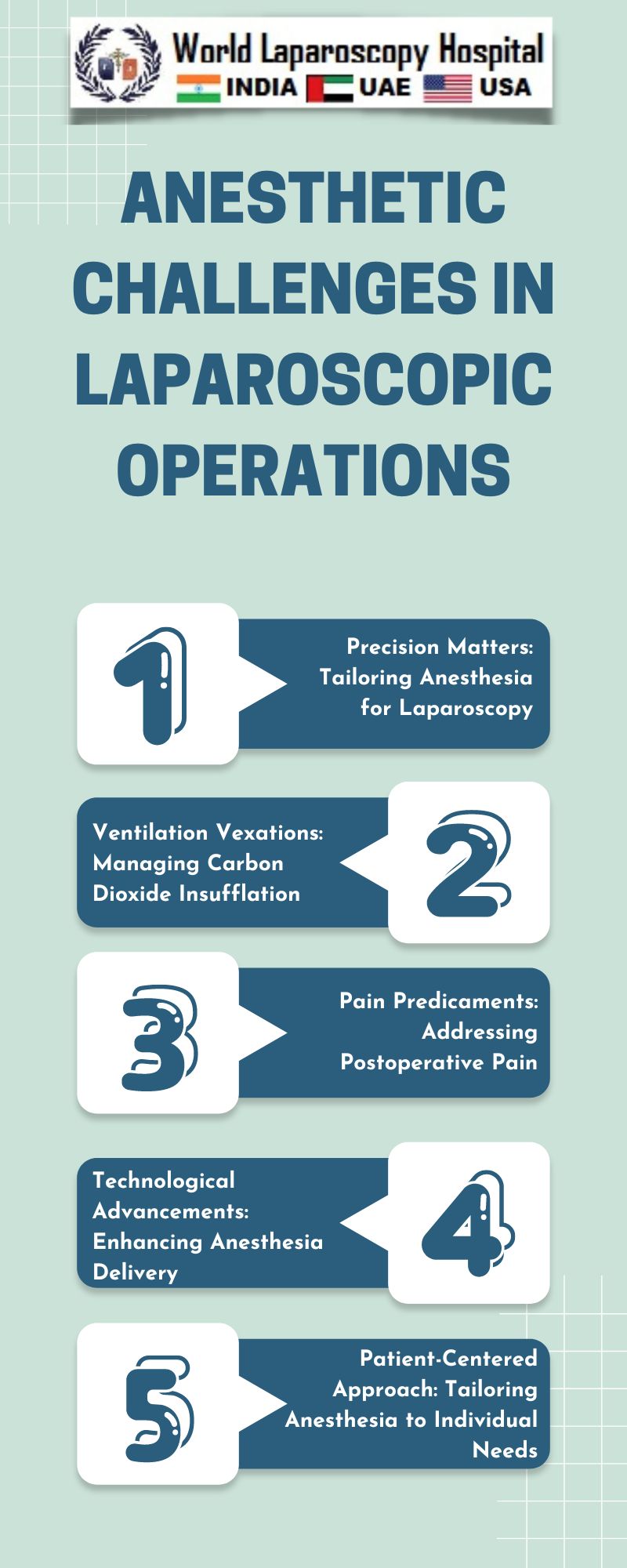Anesthetic Challenges in Laparoscopic Operations
Introduction
Laparoscopic surgery has revolutionized the field of surgery, offering minimally invasive alternatives to traditional open procedures. The benefits of laparoscopy include smaller incisions, reduced postoperative pain, and quicker recovery times. However, the shift towards laparoscopic techniques has brought about a unique set of challenges for anesthesiologists. In this article, we will delve into the intricacies of anesthetic management during laparoscopic operations, exploring the physiological changes, technical considerations, and advancements in anesthetic strategies.

Physiological Changes and Considerations
Laparoscopic procedures involve insufflating the abdominal cavity with carbon dioxide to create a pneumoperitoneum, which provides a workspace for the surgeon. This insufflation can lead to several physiological changes, posing challenges for the anesthesiologist.
-
Cardiovascular Effects:
- Increased Intra-Abdominal Pressure (IAP): Pneumoperitoneum elevates IAP, affecting venous return and cardiac output. Anesthesiologists must carefully monitor hemodynamic parameters and adjust fluid management to maintain adequate perfusion.
- Hypercarbia: The absorption of carbon dioxide from the pneumoperitoneum can lead to hypercarbia, impacting respiratory and cardiovascular function. Close monitoring of end-tidal carbon dioxide levels is essential.
-
Respiratory Challenges:
- Mechanical Ventilation: Maintaining optimal ventilation becomes crucial. The increased intra-abdominal pressure may impede diaphragmatic movement, necessitating adjustments in mechanical ventilation parameters.
- Pulmonary Function: Positioning and prolonged surgery times can affect pulmonary function. Lung-protective ventilation strategies are vital to prevent atelectasis and respiratory complications.
-
Temperature Regulation:
- Hypothermia Risk: Prolonged laparoscopic procedures can predispose patients to hypothermia due to the cool insufflated gas and exposure of body cavities. Effective warming measures are imperative to prevent perioperative hypothermia.
Technical Considerations in Anesthetic Management
-
Positioning Challenges:
- Steep Trendelenburg Position: Some laparoscopic procedures require the patient to be in a steep Trendelenburg position. Anesthesiologists must address potential complications, including increased intracranial pressure, facial edema, and positioning-related injuries.
-
Pneumoperitoneum Management:
- Capnoperitoneum: Monitoring end-tidal carbon dioxide levels is crucial to prevent hypercarbia, acidosis, and related complications. Adequate ventilation strategies, including permissive hypercapnia, may be employed.
- Gas Absorption: Efficient management of absorbed carbon dioxide is vital. Close attention to acid-base balance and consideration of respiratory acidosis prevention are essential components of anesthetic care.
-
Fluid and Hemodynamic Management:
- Optimizing Preload: Given the impact of increased intra-abdominal pressure on venous return, maintaining optimal preload is essential. Goal-directed fluid therapy and judicious use of vasopressors may be employed to achieve hemodynamic stability.
- Renal Perfusion: Pneumoperitoneum can affect renal perfusion. Anesthesiologists need to balance fluid administration to preserve renal function while avoiding excessive fluid loading.
Advancements in Anesthetic Strategies
-
Depth of Anesthesia Monitoring:
- Bispectral Index (BIS): Utilizing BIS monitoring helps anesthesiologists maintain an appropriate depth of anesthesia, minimizing the risk of awareness and ensuring optimal patient comfort during laparoscopic procedures.
-
Regional Anesthesia Techniques:
- Transversus Abdominis Plane (TAP) Blocks: Regional anesthesia techniques, such as TAP blocks, can provide effective analgesia, reducing the need for systemic opioids postoperatively. This approach contributes to enhanced recovery and improved patient outcomes.
-
Technology Integration:
- Ultrasound Guidance: Anesthesiologists may employ ultrasound guidance for regional anesthesia techniques, enhancing precision and safety. Real-time imaging facilitates accurate needle placement, reducing the risk of complications.
Conclusion
Anesthetic management during laparoscopic operations requires a comprehensive understanding of the physiological changes induced by pneumoperitoneum, meticulous attention to positioning challenges, and the integration of advanced monitoring and regional anesthesia techniques. As the landscape of surgery continues to evolve, anesthesiologists play a pivotal role in ensuring patient safety, optimizing outcomes, and navigating the intricate maze of challenges presented by laparoscopic procedures. Through continuous education, research, and innovation, the field of anesthesia will undoubtedly rise to meet these challenges, paving the way for even safer and more efficient laparoscopic surgeries in the future.
| Older Post | Home | Newer Post |





